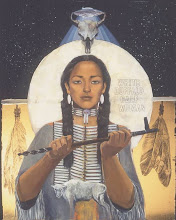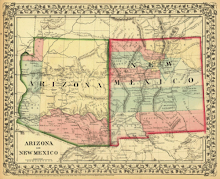Friday, July 3, 2020
‘Hillbilly’ J.D. Vance, columnist Clarence Page find common ground in southwest Ohio roots
By Steve Hammons
Long-time Chicago Tribune columnist Clarence Page and J.D. Vance, author of the book “Hillbilly Elegy” (movie due out soon), have recently acknowledged some overlapping elements of their upbringing.
Both are from Middletown, located between Dayton and Cincinnati in the southwestern corner of Ohio, near the Indiana and Kentucky state lines.
Page, a generation older than Vance, has pointed out that both his father and Vance’s grandfather worked in the same Middletown lumberyard, and that both families struggled financially.
Both Page and Vance have noted that limited economic opportunities contributed to hardships for not only their families, but also for their larger communities. For Page’s family – the Black community. And for Vance’s family – the people in southwest Ohio from southern Appalachia.
In both cases, Page and Vance say that the experiences of their families are similar to those of others from these respective communities.
HILLBILLY HIGHWAY, UNDERGROUND RAILROAD
These two communities have sometimes been perceived and labeled in certain derogatory ways. The two also seem to have several factual historical elements in common, as well as obvious differences.
In the case of southern Appalachian “hillbillies,” often of Scots-Irish backgrounds, they have sometimes been called a dysfunctional group overall, with bad work habits, problematic family relationships, low educational attainment, poor health, drug and alcohol abuse, antisocial behavior, a bad attitude that is rebellious against authority and a chip on their shoulder.
In the case of the Black community, they have sometimes been called a dysfunctional group overall, with bad work habits, problematic family relationships, low educational attainment, poor health, drug and alcohol abuse, antisocial behavior, a bad attitude that is rebellious against authority and a chip on their shoulder.
It doesn’t take a rocket scientist to examine the histories of these two groups and see that there are significant similarities that could be related to some of these derogatory perceptions and labels.
Both have a history of being used as cheap labor – very cheap labor – and often trapped in oppressive poverty by external economic, sociological and geographic circumstances for generations while trying to survive and work toward a better life.
Both Page’s and Vance’s families had moved north in years past, north of the Ohio River and into that southwestern corner of Ohio. The general route from the southern Appalachian region into southwest Ohio and points north and northwest is known as the “Hillbilly Highway.”
This is not to be confused with the east-west, officially-named Appalachian Highway, State Route 32, between Cincinnati and Athens, deeper in the Appalachian region. Athens is home of Ohio University (Page’s alma mater) and a key data point in historian David McCullough’s recent best-selling book “The Pioneers.”
The Underground Railroad across the Ohio River and through southern Ohio was another north-south route taken by many people who were also seeking a better life. Today, the National Underground Railroad Freedom Center is located in downtown Cincinnati near the Bengals and Reds stadiums on the banks of the Ohio River. After the Civil War, of course, many people headed north for a number of reasons.
SHAWNEE, REVOLUTIONARY VETS, QUAKERS, GERMANS
Some or many of the experiences of the families of Page and Vance in southwestern Ohio are probably related to the deeper historical background of the area, in one way or another.
Long before the Civil War period, Revolutionary War veterans and other settlers moved into the area as the Shawnee and other Native tribes in the region were being pushed out. Cincinnati was named for a Revolutionary War Continental Army officer veterans’ group.
After the Revolutionary War, the land rush into “the Ohio Country” was on. The Shawnee and other regional tribes fought many battles to protect their land and way of life. But, in the end, they were militarily defeated.
Quaker settlers had arrived in southwestern Ohio in the early 1800s and continued migrating to that area and others north of the Ohio River. In their own way, they tried to help the defeated Shawnee and other tribes, sometimes through misguided approaches. Regional Quakers were reportedly very involved in the Underground Railroad and anti-slavery abolitionist movement.
Several waves of German immigrants arrived in the southwestern Ohio area in the mid-1800s. Cincinnati was a major center for German immigrants and is still a center of German-American culture today. Cincinnati is one point of the "German triangle" of German immigrants and settlement, with St. Louis and Milwaukee being the other two points of the triangle.
Some people might associate German-Americans of the region with loyalty and ideological issues during World War I and World War II. However, German-Americans from Ohio fought bravely for the Union in the Civil War. Several all-German-American regiments from Ohio and elsewhere in the North fought in major Civil War battles.
So, it’s probably fair to say that Page and Vance are both products of similar and common experiences, not only of their growing-up years in Middletown, but also of certain larger contexts of American history and the history of southwestern Ohio.
(Related articles "Navy Research Project on Intuition," "Human perception key in hard power, soft power, smart power" and “Storytelling affects human biology, beliefs, behavior” are posted on the CultureReady blog, Defense Language and National Security Education Office, Office of the Undersecretary of Defense for Personnel and Readiness, U.S. Department of Defense.)

























































































































































































